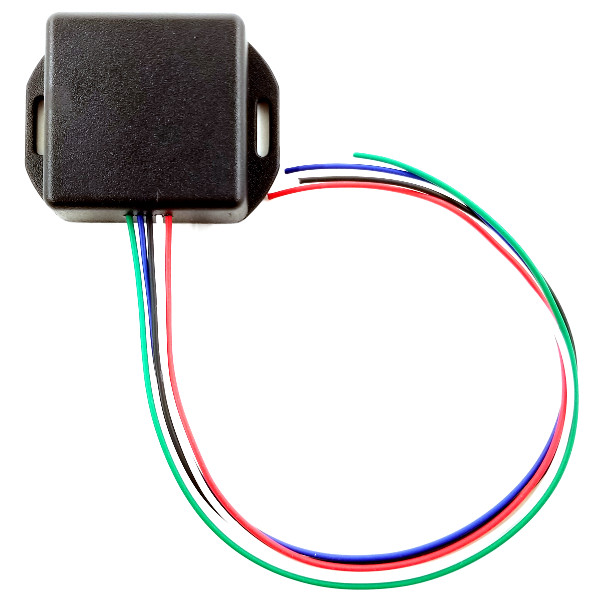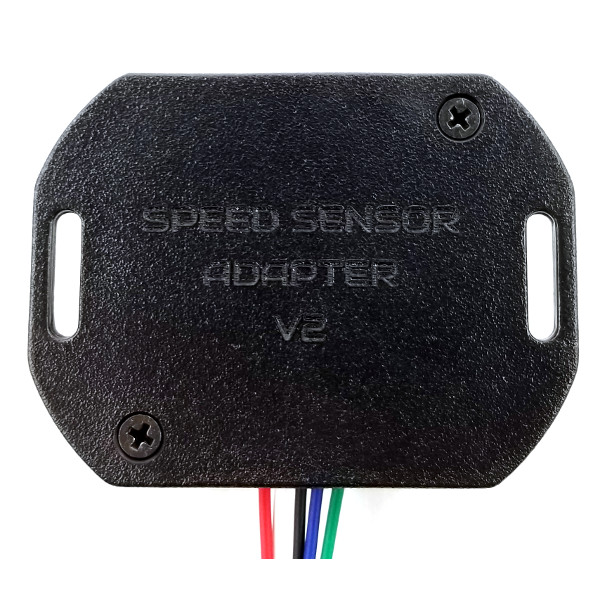Electrical Specifications:
- Supply Voltage: 12-40 V
- Output: Can be configured to produce 0-5 V or 0-10 V square wave, or left as open-drain output.
- Maximum Input Signal Voltage: +/- 200 V
Applications:
- Convert the AC signal produced by a VR sensor to a 0-5 V or 0-10 V square wave that matches the frequency of the input signal.
- Convert the signal produced by a 2-wire Hall sensor to a 0-5 V or 0-10 V square wave that matches the frequency of the input signal.
Compatible Sensor Types:
- All passive VR sensors (transmission speed, ABS wheel speed, cam/crank position).
- Most active 2-wire Hall ABS wheel speed sensors (see below).
Dimensions:
2.6″ W x 2.0″ H x 0.8″ D
Wire Length:
Approx. 12″ 22 AWG
How To Determine ABS Wheel Speed Sensor Type With Multimeter:
Measure the DC voltage between each ABS sensor wire and ground with the ignition in the ‘on’ position and the ABS sensor connected to the ABS system.
- If you measure around 11 VDC on one wire and 0.5-1.5 VDC on the other wire you have a 2-wire Hall sensor that is compatible with the Speed Sensor Adapter V2.
- If you measure 11-13 VDC on one wire and 0.0 VDC on the other wire you have a 2-wire Hall sensor that is likely compatible with the Speed Sensor Adapter V2.
- If you measure the same voltage (zero or non-zero) on both wires you will need to connect each multimeter lead to one of the ABS sensor wires and set the multimeter to measure AC voltage. Then spin the wheel by hand.
- If you measure an AC voltage that increases with the speed of the wheel you have a VR sensor that is compatible with the Speed Sensor Adapter V2.
- If you don’t measure any AC voltage while the wheel is spinning the sensor is NOT compatible with the Speed Sensor Adapter V2.


